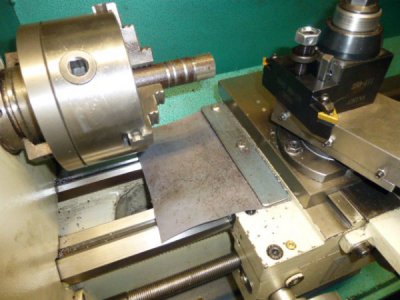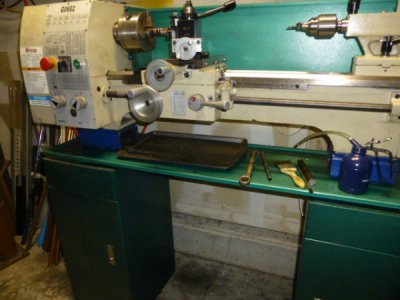- Joined
- Sep 24, 2016
- Messages
- 24
I'm finally getting time to install the 0602 I bought a few months ago.
1. When cleaning off the cosmoline (or whatever) do you just clean off the exposed surfaces or should I try to take apart the sub-assemblies, chucks, tailstock compound etc.?
2. The flat area of the chip pan sits about 0.060" above the surface of the table. Should I put a sheet of metal something under pan so the feet don't distort the pan?
3. Would putting the lathe on leveling pads be worthwhile? Similar to this project.
One consideration is that I hope to someday copy Fabrickator's Belt Drive Speed Reducer. But I have trust issues with epoxy. So I was thinking about extending the top plate under the pulleys, to provide a solid mounting place for the jackshaft cradle.
1. When cleaning off the cosmoline (or whatever) do you just clean off the exposed surfaces or should I try to take apart the sub-assemblies, chucks, tailstock compound etc.?
2. The flat area of the chip pan sits about 0.060" above the surface of the table. Should I put a sheet of metal something under pan so the feet don't distort the pan?
3. Would putting the lathe on leveling pads be worthwhile? Similar to this project.
One consideration is that I hope to someday copy Fabrickator's Belt Drive Speed Reducer. But I have trust issues with epoxy. So I was thinking about extending the top plate under the pulleys, to provide a solid mounting place for the jackshaft cradle.


